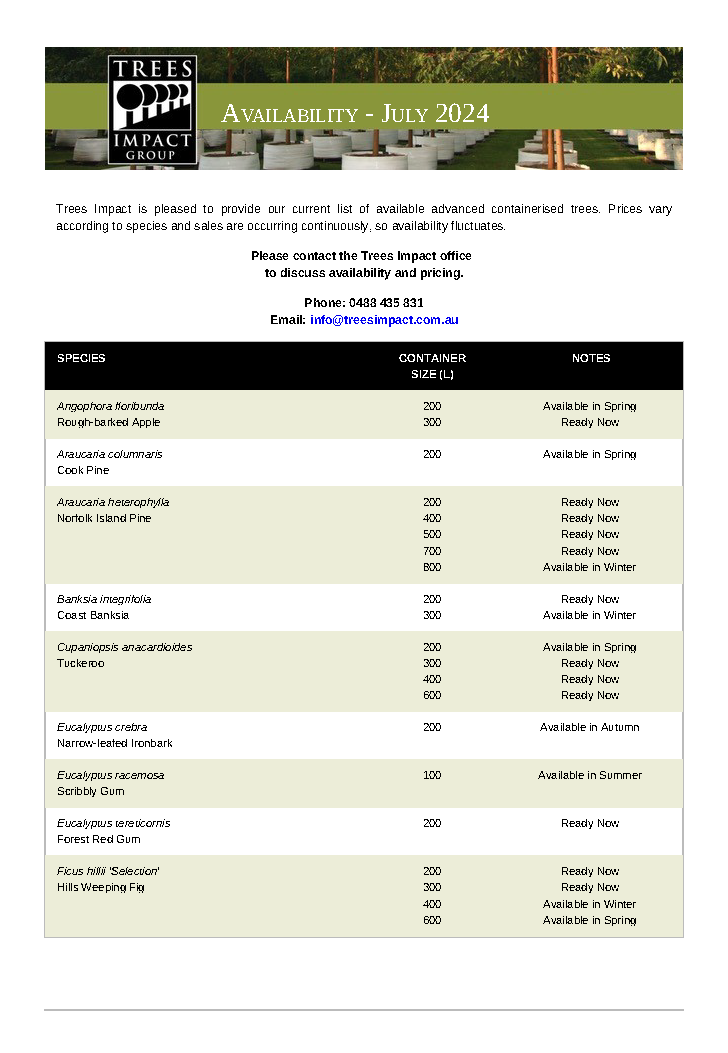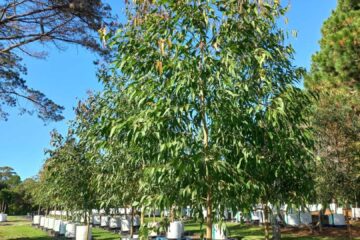5 Reasons Why You Should Buy The Best Trees
Why Buy the Best Available Trees?
1. THEY WILL LOOK GREAT
Well grown trees look great and will enhance your project from day one. And, where projects evolve in stages over time, great looking early stages will add value to the later ones.
Good trees will have deep, balanced crowns on sturdy, self-supporting stems providing maximum impact without the need for ugly stakes. They are, quite simply, more attractive.
2. THEY WILL ESTABLISH RAPIDLY
The duration and therefore the costs of critical early management are significantly less because well-grown trees establish quickly into the landscape; lesser trees will not.
Well-divided and structured root systems allow good trees to begin bridging the rootball/site-soil interface immediately – so the trees can rapidly access site soil moisture reserves. Balanced crowns and rootballs mean there are enough roots to “get on with the job” and enough ballast to hold the tree up. Deep crowns with plenty of foliage produce abundant photosynthates that drive the establishment process.
3. THEY WILL GROW MORE VIGOROUSLY
The best trees, well planted and established, quickly enhance presentation and become appreciating assets. And their early vigour and increasing size also improve resistance to pests, diseases and other forms of stress, thereby further reducing after-care costs.
When deep crowns with plenty of leaves, crowns and rootballs in balance, great root systems and rapid establishment all combine, then good trees will quickly start growing vigorously on site.
4. THEY WILL NOT NEED REPLACING
Good trees are replaced less often. Failed trees, if not replaced, can drag down and sometimes ruin whole planting projects. Waste and the added costs of replacement are minimised or avoided altogether by reducing or eliminating failures.
Failed trees are expensive and often very difficult or impossible to replace. Good trees establish and grow rapidly so the need for replacements is far less common.
5. THEY ARE SAFER
- Financially: Tree plantings that succeed greatly enhance all landscaping (and, in turn, whole sites and projects). Costs are controlled, investment risk is reduced, successful projects more likely.
- Professionally: Good trees mean greater success and reduced losses. So, for all designers, developers, contractors and arborists, good outcomes protect (and elevate) good reputations.
- Legally/ethically: Whatever your role in tree plantings, there will be obligations to apply “best practice”. If you understand that there are vast quality differences within the tree market, then using anything less than the best available trees, especially in public spaces, is to fail to honour those obligations and unwanted consequences may arise. The best trees do not snap or blow over.
We regularly read of trees failing, particularly in our increasingly extreme weather events. This can happen years after planting, sometimes causing damage and injury. Very often the causes can be attributed to flaws that originated as far back as the seedling stage. It is important to note that all tree growth, both above and below the ground, is by extension – that is by adding new bits onto existing bits. If the early ‘bits’ are flawed those flaws do not go away but are there forever.
Good trees provide the foundation that allows you to achieve your aims and objectives. It also needs to be recognised that the actual price of the trees is generally only a tiny part of the total project costs; but the contribution they can make to the outcome is disproportionately huge. To buy anything other than the best available trees is a false economy.

